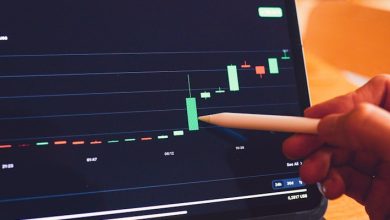What is Margin Trading? Risks and Rewards Explained

- Understanding Margin Trading
- The Basics of Margin Trading
- Exploring the Risks of Margin Trading
- Potential Rewards of Margin Trading
- Key Factors to Consider in Margin Trading
- Tips for Successful Margin Trading
Understanding Margin Trading
Margin trading involves borrowing funds from a broker to trade financial assets. This allows traders to leverage their positions and potentially amplify their gains. However, it also increases the risk of losses, as traders can end up owing more money than they initially invested.
When traders open a margin account, they are required to maintain a minimum balance known as the maintenance margin. If the value of their account falls below this level, they may receive a margin call from the broker, requiring them to deposit more funds to cover their losses. Failure to meet a margin call can result in the broker liquidating the trader’s assets to repay the loan.
While margin trading can be lucrative for experienced traders who understand the risks involved, it is not suitable for everyone. Novice traders should proceed with caution and consider starting with a cash account before venturing into margin trading. It is essential to have a solid understanding of the market and a well-thought-out trading strategy to navigate the complexities of margin trading successfully.
The Basics of Margin Trading
Margin trading is a strategy that allows investors to borrow funds to increase their buying power in the market. By using leverage, traders can potentially amplify their profits, but it also comes with increased risks. It involves borrowing funds from a broker to trade assets, using the investor’s existing portfolio as collateral.
When engaging in margin trading, investors are required to maintain a minimum amount of equity in their account, known as the maintenance margin. If the account falls below this threshold, the broker may issue a margin call, requiring the investor to deposit more funds or sell assets to cover the losses.
Margin trading can be a powerful tool for experienced investors looking to maximize their gains in a bullish market. However, it also exposes traders to the potential for significant losses, especially in volatile market conditions. It is essential for investors to fully understand the risks involved and have a solid risk management strategy in place before engaging in margin trading.
Exploring the Risks of Margin Trading
When considering margin trading, it is important to be aware of the potential risks involved. Margin trading can amplify both gains and losses, making it a high-risk strategy for investors. One of the main risks of margin trading is the possibility of a margin call, where the investor is required to deposit additional funds to cover potential losses. This can lead to significant financial losses if the market moves against the investor.
Another risk of margin trading is the potential for liquidation. If the value of the assets used as collateral for the margin trade falls below a certain level, the broker may liquidate the position to cover the losses. This can result in the investor losing not only their initial investment but also any additional funds they have deposited.
Additionally, margin trading involves borrowing funds from the broker, which means that the investor will have to pay interest on the borrowed amount. This can eat into potential profits and increase the overall cost of the trade. It is important for investors to carefully consider whether the potential gains from margin trading outweigh the costs and risks involved.
In conclusion, while margin trading can offer the opportunity for higher returns, it also comes with significant risks. Investors should carefully assess their risk tolerance and financial situation before engaging in margin trading to ensure they are prepared for the potential downsides. It is crucial to have a solid understanding of the risks involved and to have a clear risk management strategy in place to protect against potential losses.
Potential Rewards of Margin Trading
Margin trading offers several potential rewards for investors who are willing to take on the additional risk involved. Some of the key benefits of margin trading include:
- Increased buying power: Margin trading allows investors to leverage their existing capital to potentially increase their buying power, enabling them to take larger positions in the market.
- Enhanced returns: By using borrowed funds to invest, traders have the opportunity to amplify their returns if the market moves in their favor. This can lead to higher profits compared to trading with just their own capital.
- Portfolio diversification: Margin trading can provide investors with the ability to diversify their portfolio more effectively by spreading their investments across a wider range of assets.
- Short-selling opportunities: Margin accounts also enable traders to engage in short-selling, where they can profit from the decline in the price of an asset. This can be a valuable strategy in bearish market conditions.
- Access to advanced trading strategies: Margin trading opens up the possibility of using more complex trading strategies, such as options trading and futures contracts, which can offer additional opportunities for profit.
Key Factors to Consider in Margin Trading
When engaging in margin trading, there are several key factors that traders should consider to maximize their potential for success and minimize risks. One important factor to keep in mind is the concept of leverage, which allows traders to control a larger position with a smaller amount of capital. While leverage can amplify profits, it can also magnify losses if the market moves against the trader. It is crucial to carefully manage leverage to avoid excessive risk.
Another important factor to consider is the margin requirement set by the broker. This is the minimum amount of funds that must be maintained in the trading account to keep positions open. Failing to meet margin requirements can result in the broker liquidating the trader’s positions, leading to significant losses. Traders should always be aware of their margin levels and have a plan in place to meet margin calls if necessary.
Risk management is also a key consideration in margin trading. Traders should have a clear understanding of their risk tolerance and set stop-loss orders to limit potential losses. Diversifying the portfolio and avoiding over-concentration in any single position can help spread risk and protect against market volatility. Additionally, staying informed about market conditions and events that could impact prices is essential for making informed trading decisions.
It is important to note that margin trading is not suitable for all investors. It requires a high level of discipline, knowledge, and experience to navigate the complexities of leveraged trading successfully. Traders should carefully weigh the potential rewards against the risks involved and only trade with funds that they can afford to lose. By considering these key factors and staying informed, traders can increase their chances of success in margin trading while minimizing potential losses.
Tips for Successful Margin Trading
For successful margin trading, it is essential to follow certain tips to minimize risks and maximize rewards. Here are some key strategies to keep in mind:
- Start with a solid understanding of the market and the assets you are trading.
- Set a clear investment goal and stick to a well-thought-out trading plan.
- Only trade with money you can afford to lose, as margin trading involves a high level of risk.
- Use stop-loss orders to protect your investments from significant losses.
- Diversify your portfolio to spread out risk and avoid overexposure to a single asset.
- Keep a close eye on market trends and news that may impact your trades.
- Regularly review and adjust your trading strategy based on your performance and market conditions.
- Consider seeking advice from financial professionals or experienced traders to gain insights and improve your trading skills.



